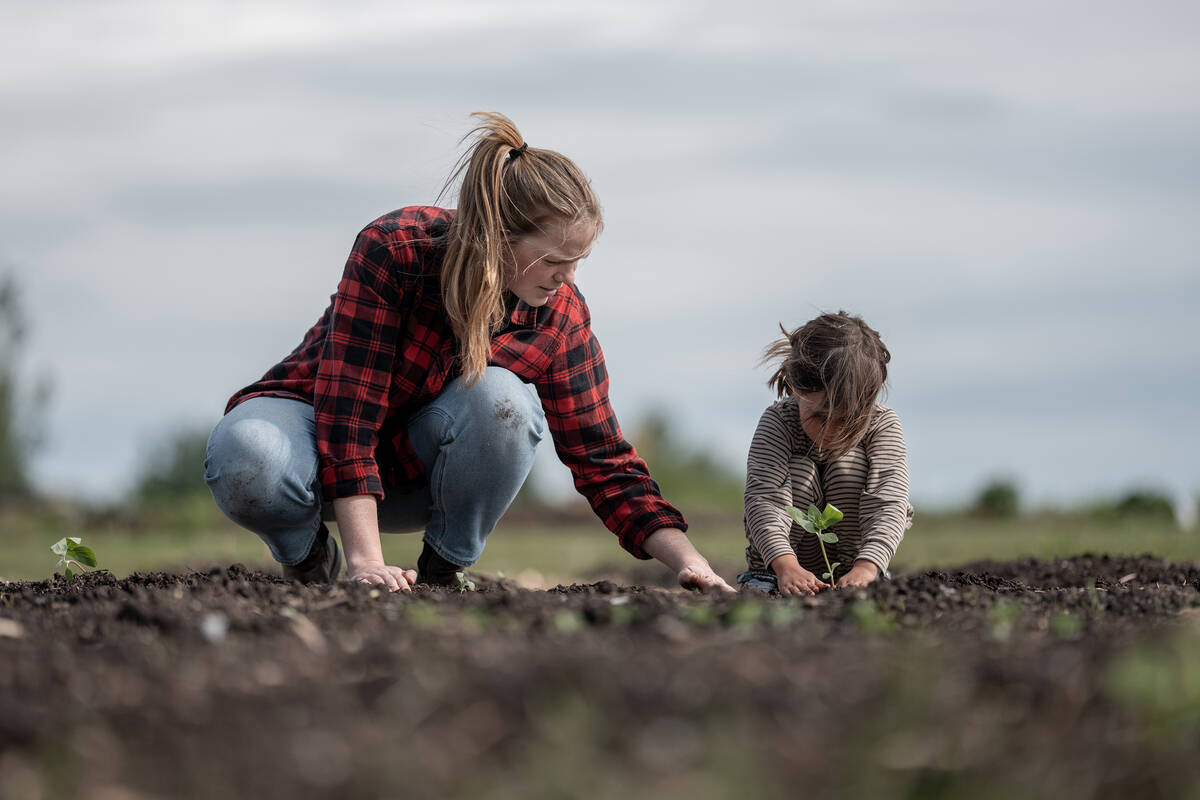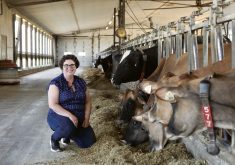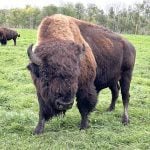We all know the basics of health: Get exercise, watch our weight, don’t smoke. But for better health success over the long term, we know we can go further. We should get regular checkups, eat more vegetables, nurture our personal relationships, maintain good sleeping habits and more.
Similarly, we know the basics of farm business success. We can rein in our costs, keep our production skills up, watch the market, be cautious about debt, invest in insurance.
We know too that there are things we can do to raise our odds of success still more. We can learn more about farm business management, join a peer group, get detailed financial analyses, benchmark our farm performance.
But is even that enough? In today’s volatile world, maybe it’s not.

For his take on what smaller and larger farms should do, we checked in with David Kohl, professor emeritus of agricultural and applied economics at Virginia Tech and one of the continent’s top farm financial brains. What does he recommend?
Watch your ratios
For small farms, in particular, watch those ratios. In fact, Kohl has some alarm signals to watch for. Especially for small farms, keep your ratio of expenses over revenue below 70 per cent (excluding depreciation and interest paid), and your equity above 60 per cent. If the first is too high and the latter is too low, you are putting yourself at too much risk. There are so many other sources of risk in farming, notes Kohl, from weather to markets to world politics. You have to anticipate that you’re going to experience some shocks in the coming decade, so don’t get yourself stuck out on a financial limb when one comes along.
Read Also

Farm succession: Where to begin?
Recognizing that the process of farm succession is lengthy, involved and requires a solid end goal can help farmers determine where to start.
Analyze household and farm business budgets — and keep them separate
Kohl is also a firm believer that family and household budgeting is just as important as farm business budgeting, especially for smaller farms, and he strongly recommends keeping the two streams separate.
Second, he recommends looking closely at your household/personal living expenses when deciding whether the farm is of a size to accommodate all the family members depending on it.
As a rule, each family unit needs $40,000 to $70,000 in net income from the farm on a continual basis (it can easily get higher than that). Take a look at current spending. How much are you actually spending?
Then look at the portion of the farm’s net revenues that are paying for living costs. Is there enough left over for expansion or for necessary expenses?
Keeping the two budgets separate will help decide how many families the farm can support. Conversely, it can also help determine how much expansion would be needed to add another family, and whether that expansion is realistic.
Make business and personal goals and keep a balance
“I’m a big believer in having your goals for the next year and for the next five years written out, both farm business goals and personal goals,” says Kohl. “It’s sounds easy, but it’s easier to put it off. It’s like going to the dentist — it’s not necessarily going to be comfortable but it’s something you have to do.”
Also think carefully about how you come up with those goals so you can be sure you’re actually thinking through your options.
“I even recommend that couples come up with goals separately and then come back together to see the commonalities and differences,” Kohl says. “You can’t come up with a game plan if you don’t have concrete goals.”
Create a diversification strategy depending on available skill sets
A close look at the skills and interests of family members will lead to questions about how the farm business can be diversified. Most smaller farms in the U.S. and many in Canada have off-farm income and alternate income centres that don’t require a high level of investment, notes Kohl. This might be towing, trucking, or an off-farm job. The younger generation is very entrepreneurial, he explains, but good time management skills are needed in any venture.
Remember, however, that each separate endeavour on the farm needs its own business plan.
“Just do a cash flow for each endeavour: ‘How am I going to make money with this?’ That’s 80 per cent of the business plan,” says Kohl. “What’s my market, what are the costs, what is plan B and C in case plan A doesn’t work out — what’s your game plan as conditions change? It all gets you to focus on what you can control and to manage around the things that are beyond your control.”
Efficiency first
Kohl strongly advises that “better is better before bigger is better.” Get efficient before you get bigger. When any business gets in trouble, he observes, the business owners will often try to grow their way out of problems, but ignoring your problems will only compound them.
“Get efficient, grow the right crops, eliminate unused assets including people, align with the right markets, look inwards and outwards,” Kohl says. “For smaller farms, it’s particularly important to focus on efficiency, as they just don’t have the scale to absorb inefficiencies.”
Keep your working capital high
For both larger and smaller farms, the higher you can keep your working capital (current assets minus current liabilities, the assets you can turn to cash without impacting your operation, and savings), the more business flexibility you have. It should be at least 20 to 25 per cent of expenses.
“It’s everything,” says Kohl. “It allows you to work at your future moves, to take a market/political/weather incident.”
In addition, this concept also applies to household/personal finances. You should have a personal cushion of savings and/or financially liquid assets available at all times to deal with potential sudden changes.
For larger farms
Owners of larger farms must take complete ownership of all their numbers, says Kohl. “You need to know, understand and monitor your finances line by line,” he says. “You also have to look at profits and cost at least quarterly, whether your projections match the actual results, whether you’re ahead or behind and why. This should be all gone through with your lender and your advisory team at least quarterly as well.”
Manage your risk
Know your cost of production, then market above it when possible, says Kohl. Update your risk management plan, have a back-up plan for the worst-case situation. “We’re finding this is more important the larger you are,” says Kohl. “Things can get out of control quickly.”
Asset utilization, including people
“This is the bird poop principle,” Kohl explains. “It’s very simple. Go out on your farm and see what’s got bird poop on it (including, he laughs, family members). Everyone and everything has to be working towards efficiency and getting the maximum out of your resources.”
A management mindset
This is one of the most difficult things for farmers, in Kohl’s view. As you grow your business, he says, you must also grow your business acumen, and farmers are not always used to that. They are doers, but they mostly have to be managers when they have a large farm. Indeed, Kohl says farmers should spend 85 per cent of their time managing and the other 15 per cent doing actual farming activities.
This management time obviously includes managing farm staff. “People can be your biggest asset or your biggest liability, and four per cent of your staff who cause problems will take 50 per cent of your time, so get rid of those people if you have them and try to do a better job when you replace them,” Kohl says. “Employee management is one of the decisive elements in whether the business will be profitable or sustainable over the long term. Learn to be a good supervisor or hire a good supervisor. Farmers don’t want to manage but they also don’t want to hire managers… they have to do one or the other. But one person also can’t manage it all, so divide and delegate responsibilities appropriately.”
Technology adoption
Kohl believes bigger farms can be profitable with high tech or low tech. There’s no one model that fits all. Look at your skill set and that of the people around you, look at your needs and make decisions about technology appropriately. Don’t feel pressured to get the latest this or that, he says, noting that some mechanically minded farmers are going back to tractors from the 1990s because they can repair these tractors themselves.
Watch your rate of growth
Businesses make foolish mistakes during the good times, says Kohl, so sidestep that pitfall. He notes that in very profitable years, you will outgrow your capacity for business management.
Invest 10 per cent of profits outside of the farm business
“I get a lot of pushback on this,” says Kohl, “but only investing in your farm is generally not a good idea. This also affects succession. Remember the 50 per cent rule: you want 50 per cent of retirement income coming from outside the farm. This gives the next generation flexibility and doesn’t saddle them with the need to totally support the older generation. You need a long-term plan for both generations to succeed.”
Reach your goals
To reach your goals, spend five to 10 per cent of your time planning, including time to strategize how to make the plan reality. “It’s not rocket science,” Kohl says. “Monitor your progress.”















